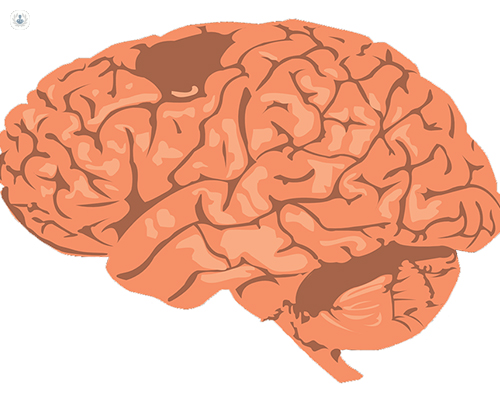


What is hemiplegia?
Hemiplegia is paralysis of one side of the body. The most common cause is a stroke, but it may also be caused by, for example, diseases affecting the spinal column or brain hemispheres. Hemiplegia may be present from birth or develop later in life.

There are four main types of hemiplegia:
- Cerebral hemiplegia: the cause is a brain lesion.
- Spinal hemiplegia: the cause is lesions in the vertebral column.
- Facial hemiplegia: paralysis affecting one side of the face.
- Spastic hemiplegia: in addition to paralysis, there are spastic movements on the affected side.
Hemiparesis is similar to hemiplegia but much less serious.
Prognosis
There is not a complete cure for hemiplegia but it can improve a lot if treatments and therapies recommended by specialists are followed diligently.
Symptoms of hemiplegia
The symptoms of hemiplegia and their severity essentially depend on which part of the brain is affected.
The most common symptoms notably include:
- Problems walking and maintaining balance
- Difficulty with motor activities, such as holding or grabbing
- Blurred or low vision
- Difficulty swallowing
- Problems spelling out
- Loss of sensation on one side of the body
- Numbness or tingling sensation on one side of the body
- Loss of bowel or bladder control
- Depression or greater emotional lability
- Memory loss
Medical tests for hemiplegia
Early detection of the pathology is crucial. To detect or confirm a lesion, whether in the brain or spinal cord, imaging studies such as a CAT scan or MRI are used. However, these studies cannot identify movement disorders.
What are the causes of hemiplegia?
The cause is that part of the brain does not receive an adequate blood supply. There are different causes but the most common is a stroke. A stroke may be ischaemic or haemorrhagic. An ischaemic stroke occurs when a blood clot obstructs an artery; a haemorrhagic stroke occurs when an artery or vein ruptures, causing bleeding into the brain.
Other common causes include the following:
- An impact or injury to the brain: the most common case, given that once blood supply is insufficient, brain functionality is lost.
- A clot in a blood vessel that blocks blood.
- Bleeding from a blood vessel in the brain.
- A brain tumour.
- Diabetes.
- Migraine.
- Meningitis.
- Hereditary or congenital diseases.
- Struge-Weber syndrome.
Generally, a lesion on the right side of the brain causes hemiplegia on the left side, and vice versa.
Can it be prevented?
There are some steps that can be taken to prevent hemiplegia:
- Pursue a healthy lifestyle (stop smoking, drink in moderation)
- Eat a balanced diet
- Attend scheduled check-up appointments
- Avoid exposure to extremes of temperature
- Emotional stress
- Physical fatigue
- Respiratory system infections.
Treatment of hemiplegia
Treatment has two components: aetiological and symptomatic. The former treats the causes of the motor problems while the latter encompasses the various pharmacological and rehabilitative measures that seek to reduce disability and functional deficits.
Psychological support and rehabilitative measures (speech, physical, etc) depend on the brain area affected and the functional lesions present in each case.
Which specialist treats it?
Hemiplegia can be treated by a neurologist, or a neurosurgeon.